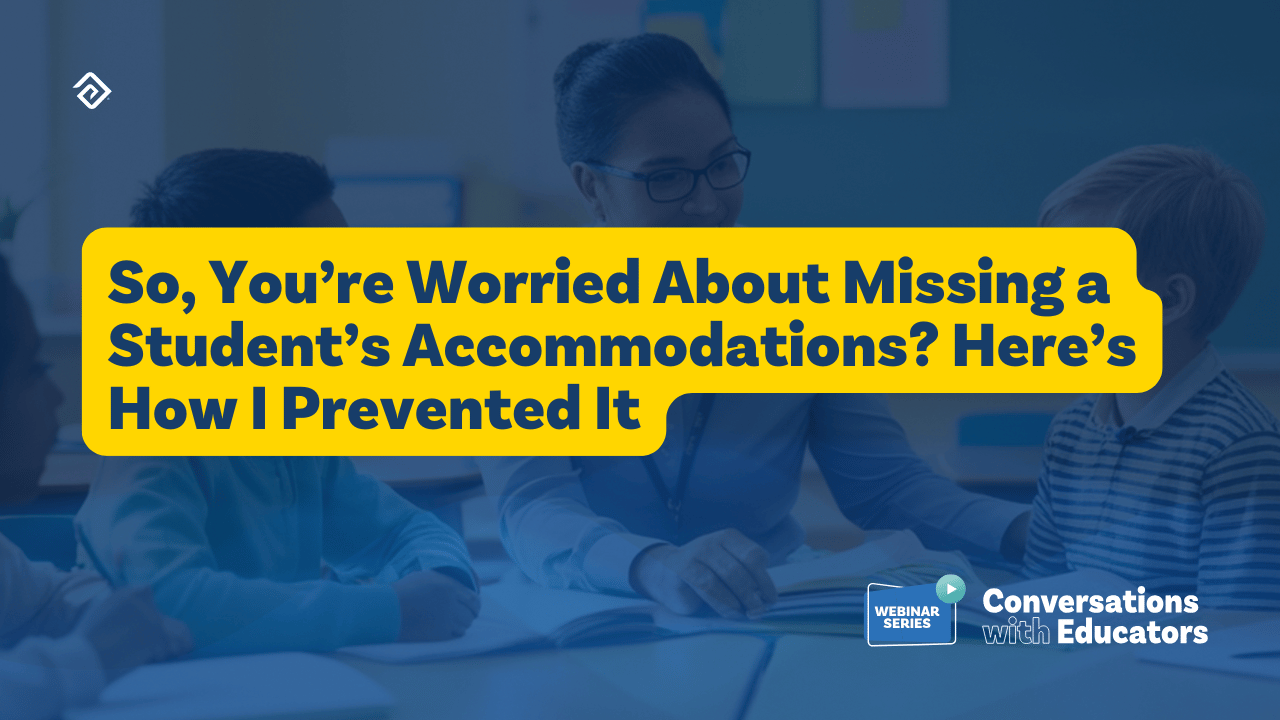Test Accommodations: An In-Depth Overview
Test accommodations are modifications to a test’s structure or execution processes. These revisions enable students with physical impairments, learning difficulties, or limited English-language proficiency in presenting their experience and abilities in a testing scenario. For example, changes to the testing environment may include a large-print version or permit extra time for test completion.
Standardized exams and other high-stakes assessments provide access to educational and job possibilities. It is virtually impossible to attain such goals without taking a standardized entrance or proficiency exam—whether applying to college, university, graduate program or attempting to earn a professional license or trade certification.
Many testing organizations have taken steps to guarantee that people with disabilities have equal access to the testing process. As a result, test accommodations are quite common.
Why Are Test Accommodations Mandatory?
By mandating that testing organizations offer modified tests to make them more accessible to students with disabilities, the Americans with Disabilities Act (ADA) assures that individuals with disabilities can compete for and explore educational and employment opportunities. In addition, testing accommodations allow measuring a test-taker’s true aptitude while providing an equal opportunity.
For example, test accommodations may allow for using a simple calculator during testing to evaluate one’s ability to solve advanced math equations. However, in this instance, the ability to execute simple arithmetic computations is supplementary to the test’s purpose. If, on the other hand, the goal of the test is to assess the individual’s understanding and ability to perform calculations, then allowing a calculator is unlikely.
Testing accommodations can impact the way test items are presented to students, how they respond to them, and when or where the exam is given. Additionally, they can affect the timing and assessment planning. Testing accommodations do not allow for changes to the test’s framework or invalidate the results.
IEP/Section 504 and Test Accommodations
Disabilities present differently for each individual, necessitating a tailored strategy to meet each child’s needs better. This is the underlying idea of an individualized education program (IEP) and Section 504 Plan, which must take into account the smooth transition from classroom education to assessment situations.
Section 504 of the Rehabilitation Act of 1973 is intended to assist the parents of children with physiological or cognitive disabilities in public or publicly-financed private schools in developing personalized educational plans in collaboration with instructors. As per a Section 504 plan, procedures guarantee that kids are treated properly in the classroom.
The purpose of these plans is for kids to receive an education in conventional classes while also receiving needed assistance, accommodations, or educational aids. Alternative arrangements, as well as private or residential entities, may be considered if students are unable to achieve sufficient academic progress.

Who Is Eligible for Testing Accommodations?
Accessible testing accommodations are available to students in need. A student is considered to have a disability if they have a physical or mental impairment that significantly restricts a major life activity such as seeing, hearing, studying, writing, focusing, or comprehending, or a major physiological function according to the ADA guidelines. Additionally, even with a record of academic accomplishment, a person may still be considered disabled and entitled to testing accommodations according to ADA guidelines.
What Kinds of Tests Are Covered?
The ADA covers exams conducted by any private, state, or municipal government organization for applications, licensure, accreditation, credentialing for intermediate or postgraduate education, and professional or industrial purposes. Testing accommodations must be provided according to ADA guidelines.
Exams include:
- High school equivalency (such as the GED)
- Trade licensure (such as cosmetology) or professional licensure (such as bar exams or medical licensing exams, like clinical assessments)
- Advanced educational programs (such as the LSAT or MCAT)
- Graduate school applications (such as the GRE or GMAT)
- High school admission (such as the SSAT or ISEE)
- College admission (such as the SAT or ACT)
Testing accommodations create a level playing field for students with impairments or limited language abilities who may struggle to demonstrate what they’ve learned.
A Few Important Examples of Test Accommodations
The following are examples of testing accommodations:
- Authorization to bring and/or use medications during the test (for example, for individuals with diabetes who must monitor their blood sugar)
- Braille or larger print exam materials
- Time extensions
- Wheelchair accessibility
- Screen-reading software
- Scribes to capture dictated notes and compositions or transfer responses to Scantron bubble sheets
- Distraction-free rooms
- Physical nudges (for individuals with hearing impairments)
Requests for Testing Accommodations
To guarantee equal opportunity for a person with a disability, a testing body must react to requests for testing accommodations within a reasonable time frame. Therefore, testing organizations should make sure that their procedure for examining and approving testing accommodations is quick, allowing applicants to register and study for the assessment.
Furthermore, the procedure should provide applicants with a fair amount of time to reply to any requests for additional information from the testing organization while still allowing them to take the exam during the same testing cycle.
Failure by a testing body to respond in a timely fashion—along with the need for extraneous documents—might lead to long waits for individuals with disabilities. In fact, it is a denial of fair treatment or consideration in an examination environment.
Restrictions Related to Test Accommodations
Test accommodations are restricted to particular and suitable adjustments that schools and teachers, specialists, and test designers have assessed and calculated. These restrictions ensure that test results and evaluations accurately measure students’ strengths and intellectual development.
Testing accuracy and impartiality for other students are ensured by restricting test accommodations as well as ensuring that test results do not overstate or misrepresent student ability. For example, inflated test scores may result in the denial of assistance and accommodations that students require. Conversely, incorrectly evaluating poor results can obscure a student’s genuine academic potential and ability—they may be placed in remedial classes that don’t challenge them.
Test findings are frequently used to influence instructional and support adjustments children may want. Thus, accurate assessment based on the proper use of accommodations is particularly crucial to administrators who want an accurate representation of student abilities.
In a Nutshell
Accommodations or adjustments to test-taking or test-administration may be required for students with special needs. According to legislation, schools are mandated to offer accommodations and supplementary services for students with special needs, including the Individuals with Disabilities Education Act, the ADA, and state-specific special education laws.


More Great Content
We know you'll love




